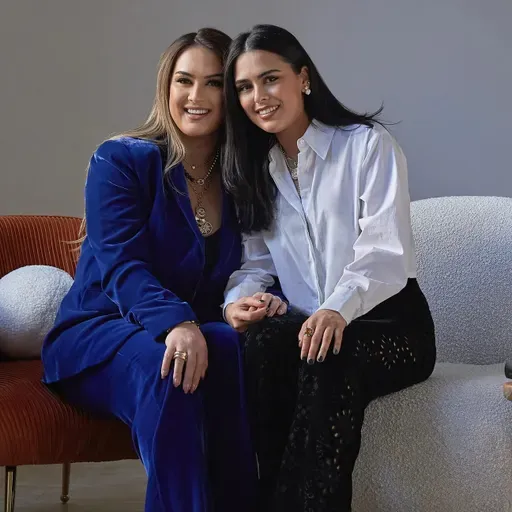
From a small town in Denmark to a sun-splashed bench in New York’s Diamond District, sisters Joy and Sarah Haugaard (the minds behind Lionheart) have built a jewelry universe where heritage, handwork, and human connection matter as much as gold and gemstones. In this conversation, we cover the origins of their partnership, Joy’s second-chance spark in 2020, the storybook that gave Lionheart its name, the community that sustains them, and why their clients don’t want what everyone else has—they want what feels like theirs.
The origin story (and why it had to be the two of them)
Raised “like twins,” the Haugaard sisters grew up inseparable—then bi-coastal—until the phone call that snapped them back together. In 2020, after a terrifying health crisis, Joy decided there was no more deferring the dream: she had to create Lionheart, not as a mood board but as a life. Sarah dropped everything in LA, flew to New York, and they got to work—7:00 a.m. to past-midnight, fueled by neighbors’ casseroles and customers’ letters.
Why Lionheart—and what it really means
The name is a promise. As kids, they worshiped Astrid Lindgren’s The Brothers Lionheart—a tale about two siblings who always find each other and face down every challenge, together. That devotion now shapes the brand’s ethos: courage, loyalty, and pieces that are made to live multiple lives.
Making the personal, universal
Joy learned the craft the old-school way—sales floor to polishing wheel to stone-sorting bench—so Lionheart’s pieces feel deeply lived. Motifs recur: birds (for freedom and their grandmother’s spirit), equestrian emblems (from their childhood around horses), and hefty, sculptural chains and charms meant to stack among the “greats” and still speak in their own voice.
The Legacy collection & giving back
Horses aren’t just a motif—they’re a mission. The Legacy collection supports 13 Hands, an upstate rescue that rehabilitates abused horses (and hosts veterans with PTSD). One signature pendant (their only regular sterling-silver design, also available in gold) sends 100% of proceeds to the nonprofit. It started as a capsule; it’s now permanent.
Who buys Lionheart (and why)
Lionheart clients are confident individualists: they might stack Van Cleef and Cartier, but they want one piece that feels like theirs. The Haugaard sisters don’t chase sameness or easy identifiability; they prefer conversation-starting forms, personal stories, and made-for-you tweaks. Social media helps, but what sustains the brand is the human exchange—DMs that turn into appointments, heirloom ideas that become rituals, and the occasional Sephora line-check where a stranger whispers, “Are those Lionheart?”
Process, practice, and the edit
Joy sketches 40–50 pieces; Sarah insists on the story and the edit—eight or so designs to start—then opens the door to bespoke variations. That tension (vision vs. viability) keeps the work bold and wearable. Their grandmother’s lessons guide the ritual: wear your jewelry, love it, respect it—then take it off at night so you can wear it again, for decades.
Where this is going
Growth, yes—but with meaning. The Haugaards want Lionheart remembered not just for weighty gold and luminous stones, but for how the work made people feel: stronger, freer, seen.
This is a public episode. If you would like to discuss this with other subscribers or get access to bonus episodes, visit atpresent.substack.com